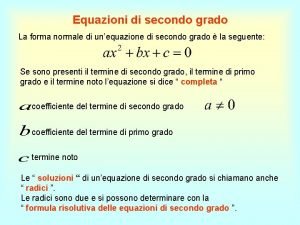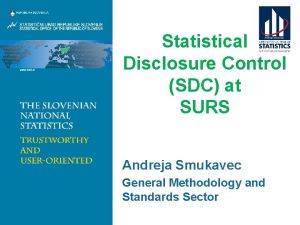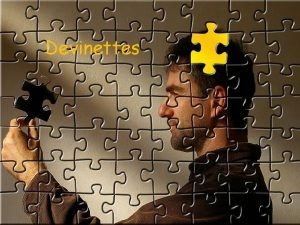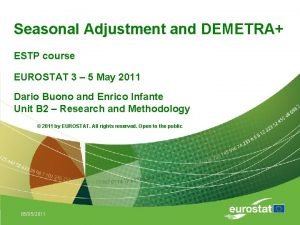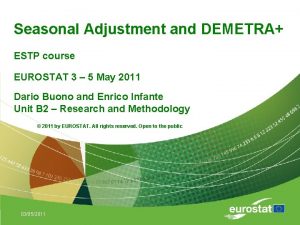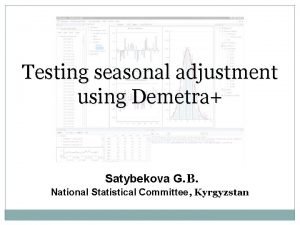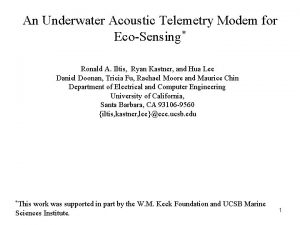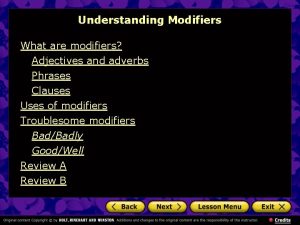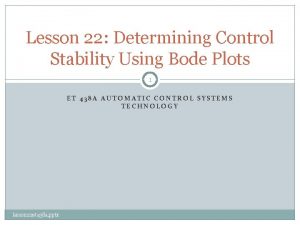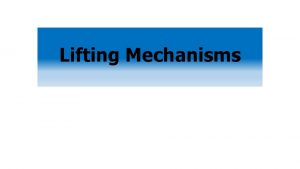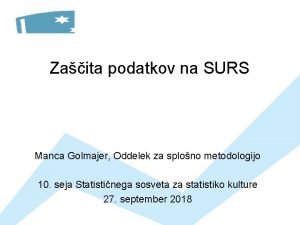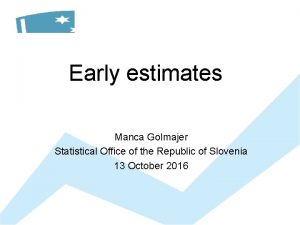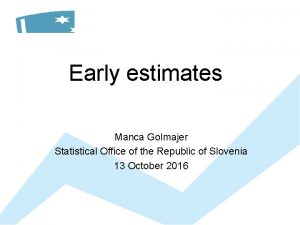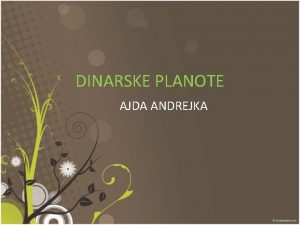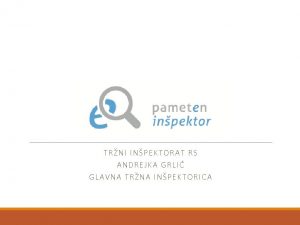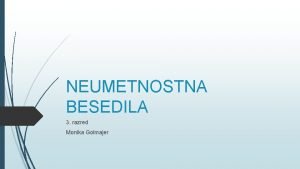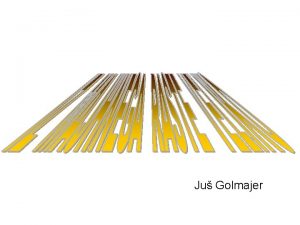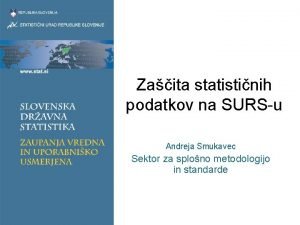Using Demetra at SURS Manca Golmajer Andrejka Smukavec













- Slides: 13

Using Demetra+ at SURS Manca Golmajer, Andrejka Smukavec 20 June 2013

Organization of SA • Time series methodologists – Modelling (model selection and modification) – Training (study, preparation of literature, courses) Contact: zascas. surs@gov. si • Survey managers – Preparation of original data – Automatic seasonal adjustment – Publishing

Seasonal adjustment software and method Software: • Demetra 2. 04: until 2013 • Demetra+ 1. 0. 4: between 2013 and 2014/2015 • JDemetra+: from 2014/2015 on Method: • TRAMO/SEATS

Introduction of Demetra+ Gradual introduction of Demetra+ during 2013: • New time series: Demetra+ is used • Old time series: introduction of Demetra+ is joined with annual review FIELD LAST PERIOD PUBLICATION Industry, construction, trade, services 1/2013 February, March 2013 Labour market Q 1/2013 June, July 2013 Business tendency 10/2013, Q 4/2013 October 2013 National accounts Q 3/2013 November 2013

Associated activities • Literature: – Time series manual (for survey managers) – Time series glossary – Seasonal adjustment of time series (methodological explanations) – Commenting of seasonal adjustment of time series – Demetra+ manual (for time series methodologists) • Course for survey managers • Presentation for the Bank of Slovenia and the Institute of Macroeconomic Analysis and Development

Input and output file • Input file: – Excel • One sheet • One type (monthly or quarterly time series) • Dates: first day of the period • Output file: – Excel – By. Component • Used by most survey managers • Dates: first day of the period – Csv – VTable • Dates: last day of the period

Refreshing • Transformation, calendar effects, regression effects (pre-specified outliers) and the ARIMA model are fixed, only automatic outlier detection might be enabled for the last few periods. • The refreshing option: Partial concurrent adjustment – All outliers (+params) – Options Concurrent adjustment and Partial concurrent adjustment – Arima and outliers (+params) do the same in our case – Option Partial concurrent adjustment – Last outliers (+params) enables automatic outlier detection for the whole last year

Checking the results • Seasonal adjustment of a time series is successful if: 1. summary is Good 2. all the other diagnostics (except for the number of outliers) are Good or Uncertain 3. automatic outlier detection is disabled • If seasonal adjustment of any time series is unsuccessful, the survey manager must send the multi-processing to the time series methodologist to check and maybe change the model (check the Bad diagnostics, include an outlier, etc. ).

Some positive things about Demetra+ • It is very user-friendly: – Well organized – Colours are used – Our survey managers like the Excel output • It has a lot of possibilities, tools, tests, etc. It gives the user a lot of information and better understanding of the seasonal adjustment process. • It is much faster to select a model (transformation, calendar effects, outliers, ARIMA model) with Demetra+ than with Demetra.

Some negative things about Demetra+ • We do not like the chart scale.

• It is difficult to compare different models for the same time series. • The maximum values for the coefficients of the ARIMA model are (3, 2, 3)(1, 1, 1). In Demetra we also used (0, 1, 1)(0, 1, 2). In Demetra+ we use (0, 1, 1)(1, 1, 1) instead.

Some problems with Demetra+ • Strange values for time series components

Methodological improvements • We can send our questions to ESTATMethodology@ec. europa. eu. • We started using trading days effect (6 or 7 regressors). Before we used only working days effect (1 or 2 regressors).
 Formula risolutiva ridotta
Formula risolutiva ridotta Solah bawa nalika maca teks panatacara iku uga diarani...
Solah bawa nalika maca teks panatacara iku uga diarani... Apa itu surs
Apa itu surs Couché avec mes soeurs j'ai la tete rouge
Couché avec mes soeurs j'ai la tete rouge Demetra eurostat
Demetra eurostat Skippedlag
Skippedlag Demetra eurostat
Demetra eurostat Defrost using internal heat is accomplished using
Defrost using internal heat is accomplished using Using system.collections
Using system.collections Aqua communication using modem
Aqua communication using modem Troublesome modifier
Troublesome modifier Refusal skills examples
Refusal skills examples How to determine stability from bode plot
How to determine stability from bode plot Simple vex elevator lift
Simple vex elevator lift
